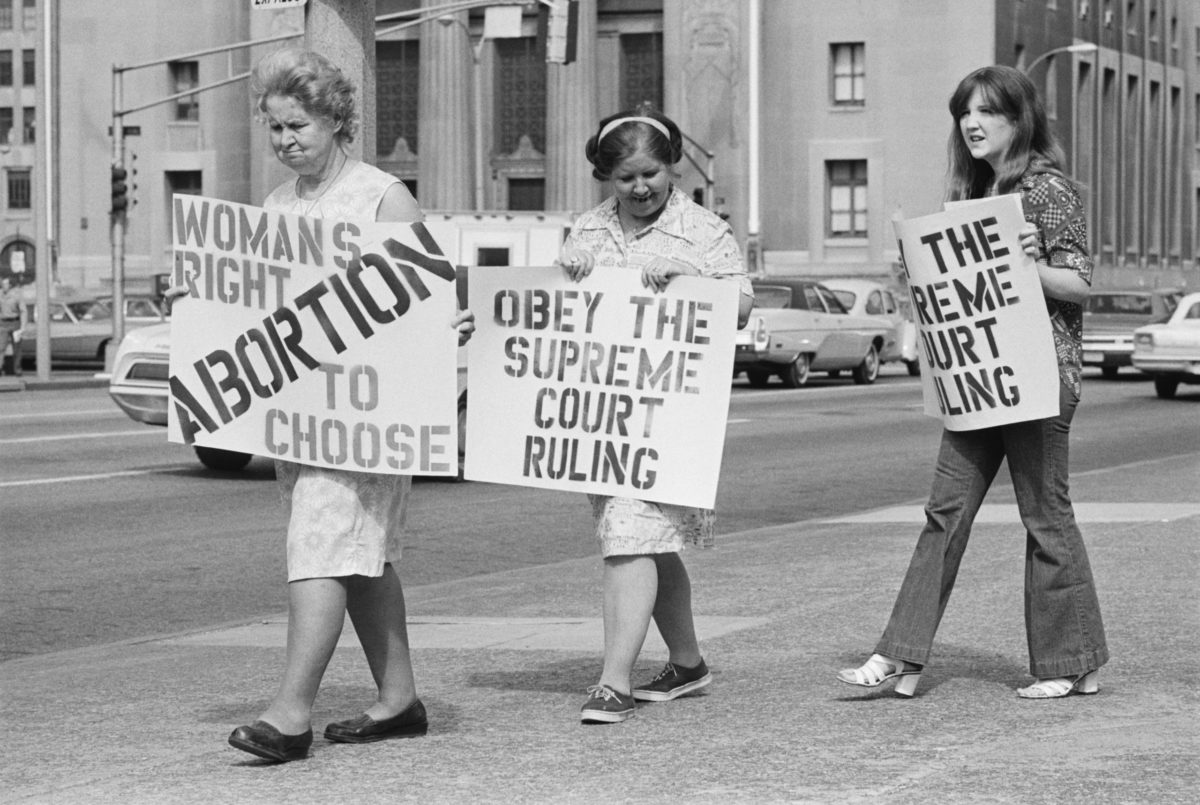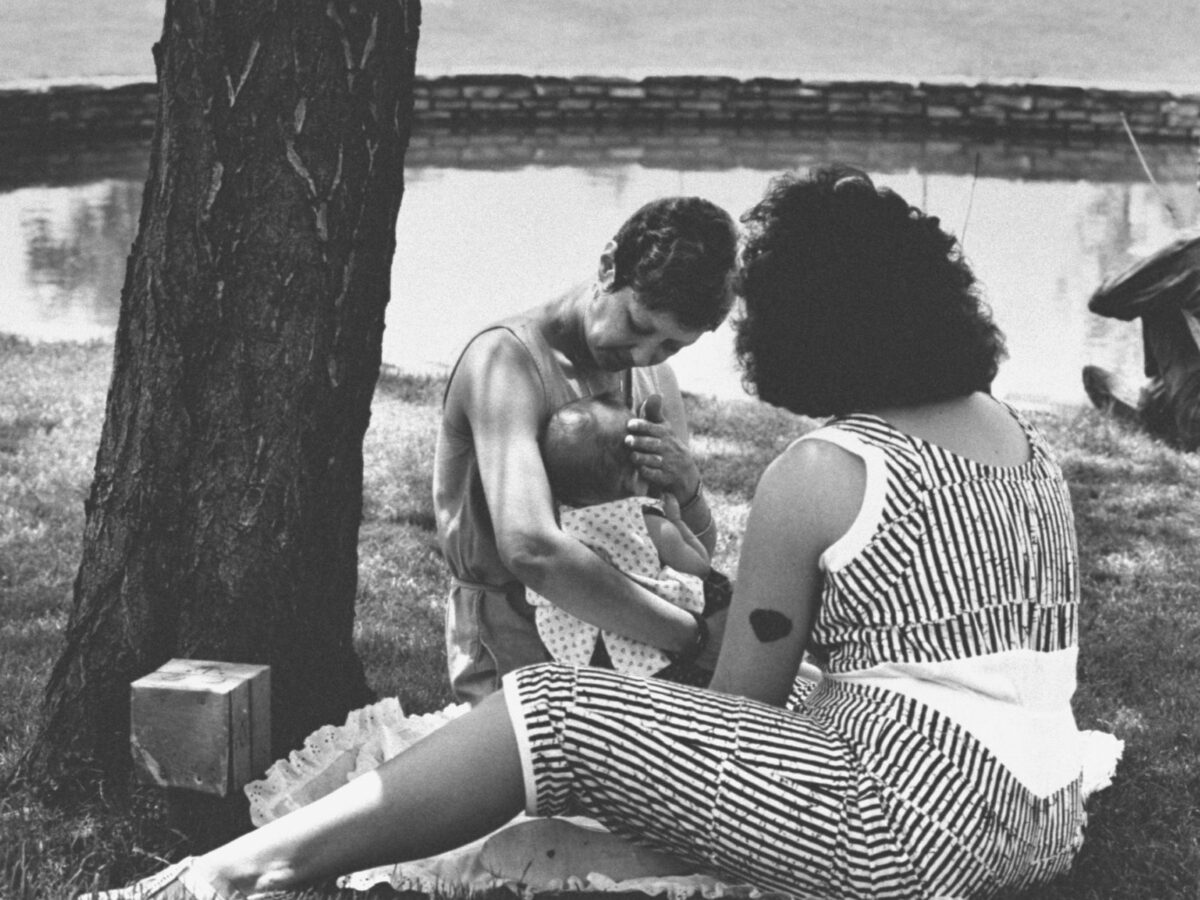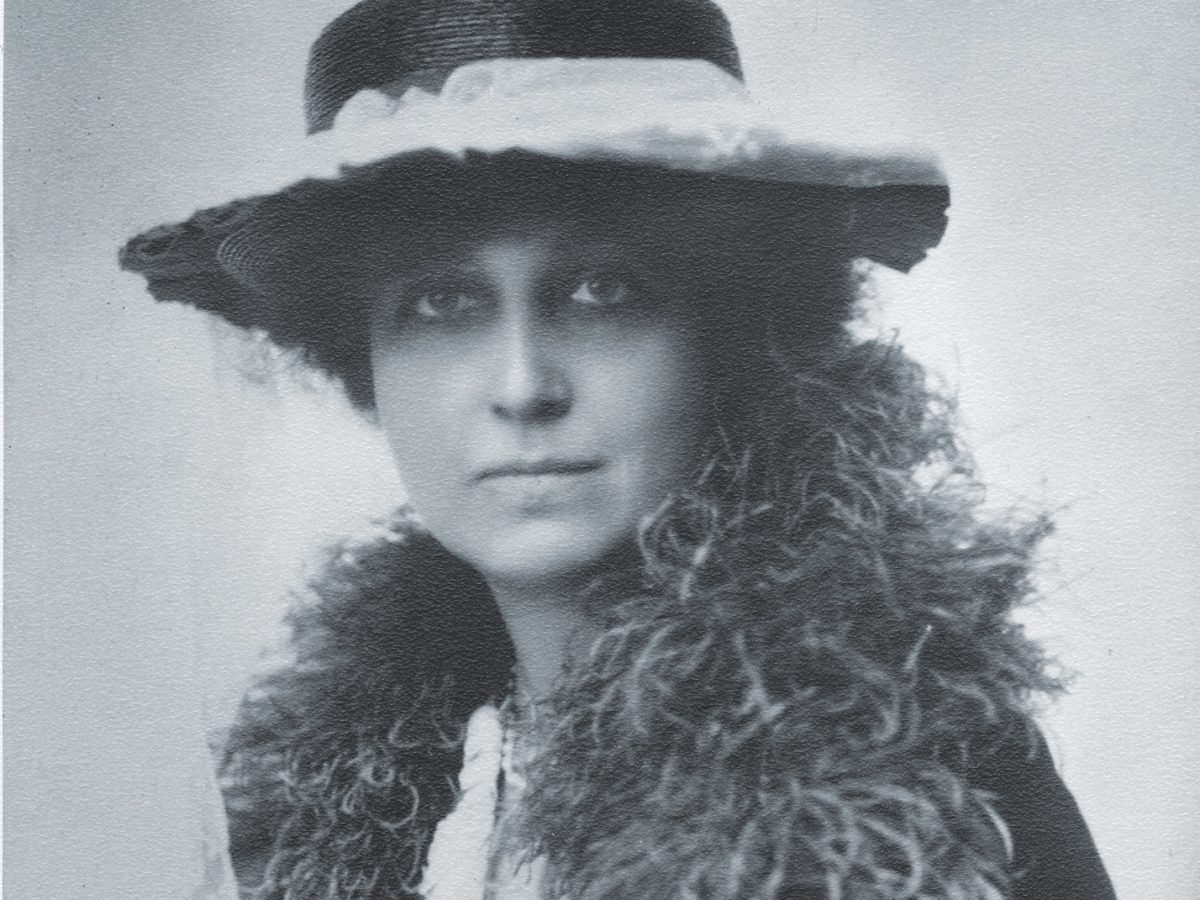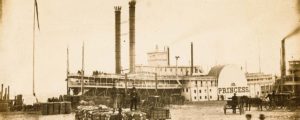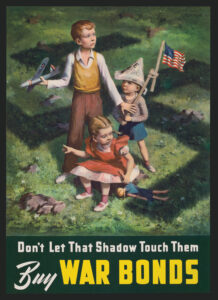“And have you those excellent receipts, madam, to keep yourselves from bearing of children?” runs a line in an early 17th-century century English drama, Ben Jonson’s “Epicene.”
A New World example of a pregnancy-ending receipt (an old word for recipe) appeared in a how-to manual, “The American Instructor,” adapted from an English title and published by Benjamin Franklin in 1748. Literary critic Molly Farrell, who brought the Franklin recipe to light in a May 5, 2022, Slate article, also turned up another such “excellent recipe” in William Mather’s 1699 “The Young Man’s Companion,” published in London.
Pennyroyal, tansy, juniper, silphium, squaw root, black haw, celery seed, cotton root bark, seeds of Queen Anne’s lace, artemisia, rue: All of these plants and dozens more appear in herbal manuals as abortifacients, plants possessing properties that can prevent or interrupt a pregnancy. Evidence of their use threads through history, from antiquity to Native Americans in North America to William Buchan’s “Domestic Medicine,” published in England in 1769.
The most striking example is the plant silphium. John Riddle, author of the 1997 “Eve’s Herbs: a History of Contraception and Abortion in the West,” noted that it flourished around Cyrene, an ancient North African city, and was so valued for its fertility-controlling properties that, he argued, it was featured on coins and ultimately harvested to extinction.
Recommended for you
Abortion in the early United States
As for the United States, abortion was popular in the 19th century — so popular that opponents sought to curb it through a criminalization campaign explicitly focused on not only confining women to the traditional role of mother but also on boosting the declining numbers of births among married Protestant white women.
As suggested by Franklin’s recipe, abortifacients were common knowledge in colonial America. Laws in colonies-turned-states later followed English common law, which had penalties for terminations of pregnancies only after “quickening,” defined as when the pregnant woman can feel the fetus move, usually after 18 weeks. Even so, according to historian James Mohr, author of “Abortion in America: The Origins and Evolution of National Policy, 1800-1900” (1978), abortions were seldom prosecuted. An abortion was difficult to criminalize, after all, if you must prove intent, and miscarriages are frequent. And given that only a woman knows when her period has ceased, there were limits in any case to proving a woman had been pregnant at all. Early American laws regarding abortion targeted punishment, not of the pregnant woman, but of apothecaries and abortion providers who sickened or killed the patient.
Advising women and distributing information privately on how to control fertility had long been the purview of women — relatives or midwives. But with the growth of towns and cities, a market for such information and procedures sprang up, delivered by three segments: midwives, and doctors (divided into two categories, including irregular doctors, who might be herbalists or homeopaths, and regular doctors, physicians trained in what was at the start little more than an apprenticeship rather than rigorous medical training). In 1800, for example, two-thirds of those practicing medicine had no formal schooling in it. In early America, the medical profession was hardly more than a declaration of some apprenticeship, and treatments were often not only drastic, such as bleeding, but ineffective. Midwives handled many ailments and most births.
GET HISTORY’S GREATEST TALES—RIGHT IN YOUR INBOX
Subscribe to our HistoryNet Now! newsletter for the best of the past, delivered every Monday and Thursday.
A Thriving industry
Practitioners competed for customers, and according to Janet Farrell Brodie, author of “Contraception and Abortion in 19th-Century America” (1994), books, pamphlets and ads that provided information about family-size control techniques, whether plant-based remedies, devices used by a woman herself, or abortion services, proliferated. One such title is “The Married Woman’s Private Medical Companion” published in 1847 by A.M. Mauriceau. Products advertised to women included “Farrer’s Catholic Pills,” “French Lunar Pills,” “Hooper’s Female Pills,” “Hardy’s Woman’s Friend,” “Colchester’s Pennyroyal and Tansy Pills,” “Chichester’s Pennyroyal Pills,” “Dr. Champlin’s Red Woman’s Relief,” “Dr Monroe’s Periodical Pills,” “Female Monthly Pills”
Riddle also noted that a doctor in Metamora, Illinois, wrote in 1873 that “The very tone of their advertisements … call attention to the abortive quality of their drugs.” A substance called savin (derived from juniper) was sold in apothecaries, and the 1886 “Plant Naming Dictionary” says it was named for “being able to save a young woman from shame.”
Surgical abortions, advertised in mass-market publications, were so prevalent that providing abortions became “one of the nation’s first medical specialties,” according to Mohr.
Brodie noted, “Well into the mid 1870s, at least one third of all the advertisements in New York City’s Sporting Times and Theatrical News were for condoms, women’s contraceptive devices, and abortions .…”
ABortion becomes illegal
So what happened? How were abortion and even birth control advice driven out of the market?
“Between 1860 and 1880, at least 40 antiabortion statutes were enacted, with 13 jurisdictions formally outlawing abortion for the first time, and at least 21 states revised existing legislation,” according to law historian Reva Siegel.
A key figure was Horatio Storer, a pioneer in gynecology at Harvard University (in 1869, he was the first to perform a hysterectomy). In Mohr’s analysis, Storer pushed very effectively for the nascent American Medical Association — formed in 1847 — to promote an anti-abortion campaign in 1858. Adopting in 1859 a resolution that abortion was “the unwarranted destruction of human life,” the association even drafted proposals to disseminate to state legislatures under the AMA aegis.
What motivated Storer and the physicians who supported his campaign? Mohr argued professional enhancement was one element: Banning accessible abortions and carving out control for physicians to decide whether an abortion was permissible pushed other providers out of the market.
But Storer’s writings showed something else: a dread of women taking control of their lives. Traditionally sought by poor, single, desperate women, abortion had by the 1850s become an option chosen by plenty of married women, who either did not want a child or did not want another child. From 1800 to 1830, one abortion occurred for every 25 to 30 live births; by the 1850s and 1860s, one abortion occurred for possibly every five or six live births, according to Mohr. Increased access to contraceptives — and inevitable failures — likely influenced this surge.
Storer was particularly alarmed by the drop in births among married native-born white Protestant women at a time when foreign immigration was high. He opposed women becoming doctors and opposed wives seeking “undue power in public life.” Moreover, he wrote, “Woman’s mind is prone to depression, and, indeed, to temporary actual derangement, under the stimulus of uterine excitement, and this alike at the time of puberty and the final cessation of the menses, at the monthly period and at conception, during pregnancy, at labor, and during lactation .…”
“Woman’s mind is prone to depression, and, indeed, to temporary actual derangement, under the stimulus of uterine excitement, and this alike at the time of puberty and the final cessation of the menses, at the monthly period and at conception, during pregnancy, at labor, and during lactation .…”
Horatio Storer
He believed that pregnancies every two to three years were fundamental not only to women’s health but to the health of an Anglo-Saxon America: “Shall [the West and the South] be filled by our own children or by those of aliens? This is a question that our own women must answer; upon their loins depends the future destiny of the nation.”
A Movement led by Doctors
The criminalization of abortion was conducted largely by physicians, not by religious leaders, Mohr writes, and the legislation penalizing abortion was folded into code revisions rather than targeted single statutes, suggesting that the issue was driven more by the special interests of physicians than by indignant public outcry: “The popular press neither called for nor remarked upon the passage of the acts; the religious press was equally detached.” Prior to the criminalization campaign, laws against abortion had been “little noticed and rarely enforced.”
The notorious anti-vice crusader Anthony Comstock — far better known today than Storer — further restricted access to information, contraceptives, and abortion. Getting his start with the backing of philanthropist Morris Ketchum Jessup, Comstock lobbied energetically against the dissemination of “obscene materials.” The proliferation of cheap erotic materials in print incensed him, and his objections extended even to depictions of genitals in health manuals about sex education and contraception.
Comstock’s ceaseless exhortations took hold among Americans reluctant to appear supporting “vice” or “impure” activities. Focused primarily on banning the dissemination of materials he regarded as obscene, Comstock advocated successfully for federal legislation banning the use of the postal system to distribute such publications in 1873, including even handbooks describing or depicting human reproductive anatomy and advice manuals on controlling fertility. It was also a misdemeanor to sell, give away or possess such a so-called obscene publication. Comstock was also involved in the prosecution of 55 abortion providers in New York, according to Siegel.
Abortion and suffragists
Where did women’s rights advocates stand on abortion? Although prominent suffragists Elizabeth Cady Stanton and Susan B. Anthony championed a woman’s right to autonomy, they opposed abortion, regarding it as an option that women turned to because of marital rape — married women could not legally refuse a husband’s sexual advances. Leaders like Stanton and Anthony advocated for voluntary motherhood: in other words, pregnancies resulting from women choosing the opportunity for conception.
Matilda Gage, who advocated for full civil rights for women — not only voting rights — had this to say: “The law of motherhood should be entirely under woman’s control, but in order to be that, woman must first of all be held as having a right to herself. When society, and especially the church, becomes permeated with the belief that woman was created for herself, and not for man, that she and not man should be the law of the family; … when each girl born into the world is taught from birth that she, and no other, has a right to her own body; when each boy from birth is taught self-control, self-restraint, and that man has no right to enforce maternity, then ‘science’ will not be asked to step into the domain of justice and inherent right, to settle questions of this nature.”
“The law of motherhood should be entirely under woman’s control, but in order to be that, woman must first of all be held as having a right to herself. When society, and especially the church, becomes permeated with the belief that woman was created for herself, and not for man, that she and not man should be the law of the family; … when each girl born into the world is taught from birth that she, and no other, has a right to her own body; when each boy from birth is taught self-control, self-restraint, and that man has no right to enforce maternity, then ‘science’ will not be asked to step into the domain of justice and inherent right, to settle questions of this nature.”
Matilda Gage
Abortions Continue anyway
Meanwhile, despite the bans, women continued to get abortions. Leslie Reagan, author of “When Abortion Was a Crime: Women, Medicine, and the Law: 1867-1973” noted in a June 2, 2022, article in Politico that Dr. Joseph Taber Johnson, a prominent physician who taught obstetrics in Washington, D.C, wrote in 1895 that, “Many otherwise good and exemplary women” thought that “prior to quickening it is no more harm to cause the evacuation of the contents of their wombs than it is that of their bladders or their bowels.”
Reagan added that “Although medical men like Johnson didn’t approve of their patients’ abortion practices, the medical profession was deeply involved in providing abortions in this period, either performing the procedure themselves or giving their patients referrals to someone else who did.”
Abortion in the 20th Century
Fast forward over the 20th century: Family planning pioneer Margaret Sanger championed birth control and opposed abortion, noting the terrible, sometimes deadly, consequences women faced from botched abortions. She tirelessly pushed for controlling family size through birth control, and despite prosecutions for distributing illegal, “obscene” materials and opening the nation’s first birth control clinic in 1916, she ultimately succeeded. A decision in a 1936 case, U.S. v. One Package, orchestrated by Margaret Sanger over a shipment of 120 diaphragms from Japan to the United States, freed physicians to receive birth control information and products in the mail, opening the door to the AMA accepting birth control as part of care by a physician.
But what about the criminalization of abortion inscribed in state laws? Those statutes began to be challenged and repealed only several decades later. Unlike the criminalization campaign, Mohr notes, the decriminalization of abortion enjoyed broad bipartisan support, and among its champions were religious leaders moved by the harmful complications of illegal abortions.
Not until 1971 was Comstock’s ban on mailing information on contraception deleted from U.S. postal law, however, and disseminating information on abortion remained illegal until 1973, when the Supreme Court decision Roe v. Wade decided that an abortion was a constitutionally protected private decision between a woman and her doctors, at least in the first trimester of pregnancy — in line with common-law tradition. Reagan offers this reminder of the pre-Roe era: Chicago had a ward dedicated to septic infections resulting from illegal abortions. It closed in 1973.
historynet magazines
Our 9 best-selling history titles feature in-depth storytelling and iconic imagery to engage and inform on the people, the wars, and the events that shaped America and the world.

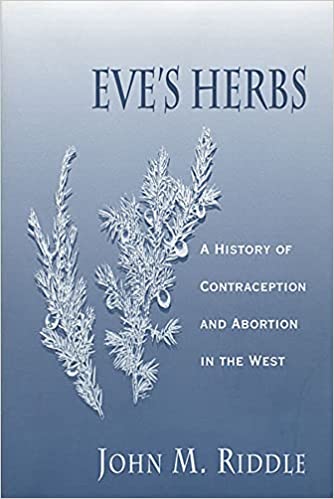
Eve’s Herbs: A History of Contraception and Abortion in the West
This post contains affiliate links. If you buy something through our site, we might earn a commission.
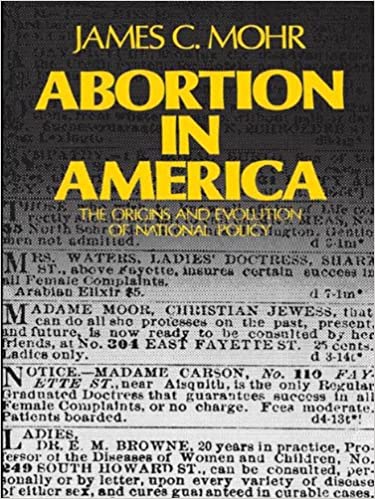
Abortion in America: The Origins and Evolution of National Policy: The Origins and Evolution of a National Policy
by James C. Moher, Oxford University Press, September 20, 1979
This post contains affiliate links. If you buy something through our site, we might earn a commission.
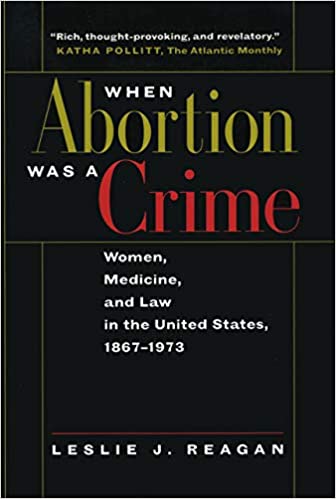
When Abortion Was a Crime: Women, Medicine, and Law in the United States, 1867-1973
by Leslie J. Reagan University of California Press, September 21, 1998
This post contains affiliate links. If you buy something through our site, we might earn a commission.
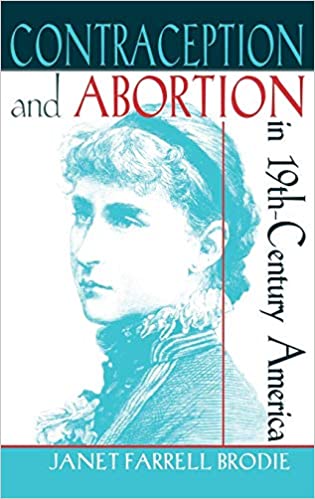
Contraception and Abortion in Nineteenth-Century America
by Janet Farrell Brodie, Cornell University Press, April 17, 1997
This post contains affiliate links. If you buy something through our site, we might earn a commission.

